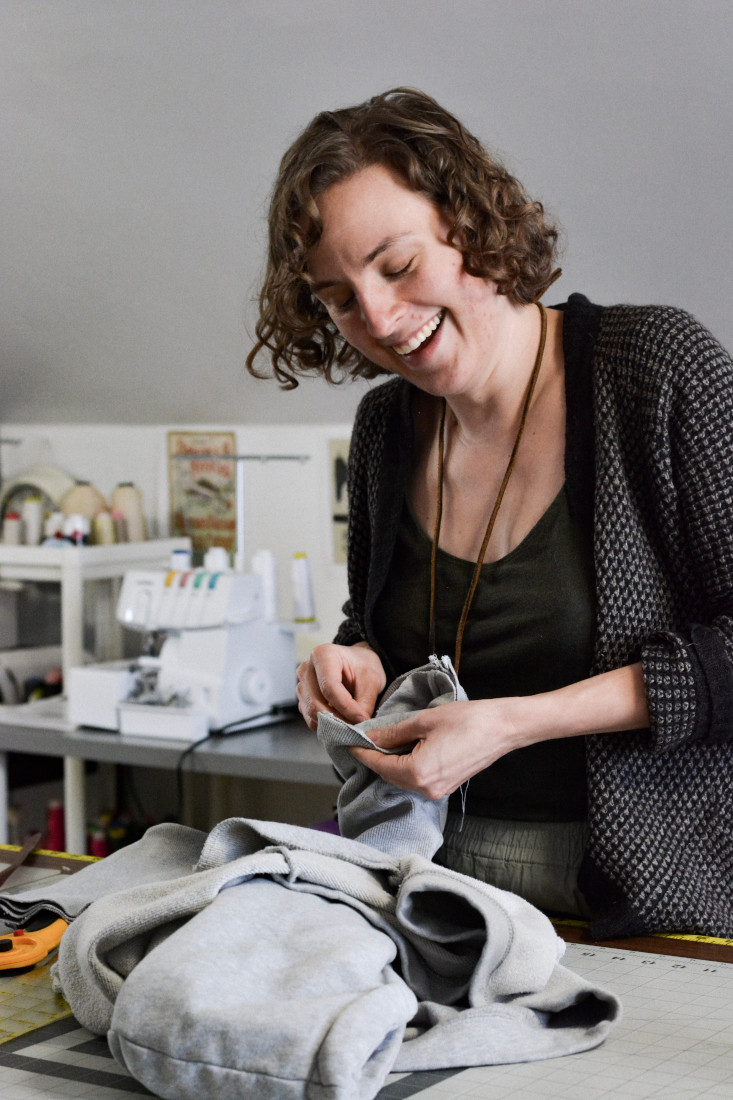What’s on your back?
The slow shift to sustainable style
Anna-Marie Janzen is a seamstress and the owner of Reclaim Mending. (Supplied photo)
Abigaïl (Biggie) Theano-Pudwill is the creator of Auxvoir Style Collective, a service focused on helping others discover their personal, sustainable styles. Auxvoir offers a variety of services, all of which begin with what people already have.
Theano-Pudwill grew up with eco-friendly habits. “My introduction to sustainable fashion wasn’t a choice. At first, it was a necessity,” she says.
“(I was) an immigrant Black child from a lower socioeconomic background. We didn’t have much, so buying clothes second-hand or fast-fashion dupes of the name brands I couldn’t afford was the only way I really knew how to live.”
Her journey to a more intentional style began by questioning the impact of the clothes on her back.
Anna-Marie Janzen, the owner and seamstress behind Reclaim Mending, also came from a home that embraced sustainable practices out of necessity. Her introduction to sustainable fashion began with her teenage love of thrifting.
“I grew up with grandparents who were refugees, and so there’s kind of a historical sense of (needing) to use things properly. Mending our clothes was just such a normal part of my upbringing,” she says.
Reclaim was created to help others disengage from fast fashion and to advocate for conscious consumption. Janzen says the primary goal behind her business “is to make your clothing last longer.”
“I really encourage people to really look through their closet, to get into the practice of taking everything out of your closet and kind of (playing) around with fun combinations,” Janzen says.
For Theano-Pudwill, sustainable fashion goes hand in hand with creativity. She challenges people to reinvent the items they already own.
“Most people only wear up to 30 per cent of their closet,” Theano-Pudwill says. “I challenge someone to try different pairings for five days in their closet. So, for five days, wear a new and fresh outfit (you) haven’t worn before.”
While dressing more sustainably is a step in the right direction, there is a long road ahead. Change is needed, beginning with accountability from major brands and governments, Janzen says.
While it’s easy to feel helpless, Janzen says it’s important to remember you’re not alone. She recommends the Fashion Revolution Foundation, a global sustainable fashion community.
“You’ll find an entire community globally of people who you can learn so much from,” Janzen says.
Theano-Pudwill also finds strength in community.
“(It’s great to see) folks navigate towards a more slow fashion-based mindset, to look for opportunities to thrift their clothes, to mend their clothes, to personalize their clothes, to see spaces like Surplus Market opening up in the mall. I think having fashion become more circular is the direction we’re going towards, especially in our community,” she says.
Published in Volume 76, Number 23 of The Uniter (March 31, 2022)







